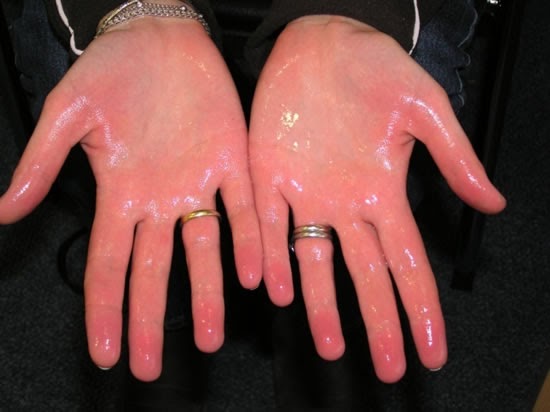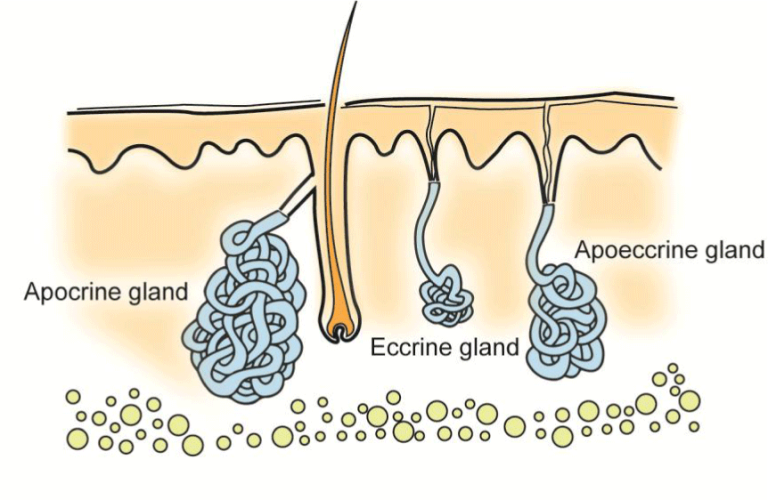Excessive sweating, also known as Hyperhidrosis (HH), is a medical condition that affects millions of people worldwide. While sweating is a natural process that helps regulate body temperature, excessive sweating goes beyond what is necessary for normal bodily function. This condition can significantly impact a person’s quality of life, causing discomfort, embarrassment, and even emotional distress. In this article, we will explore the causes, symptoms, and treatments available for excessive sweating to help those affected better understand and manage their condition.

What Is Excessive Sweating?
Excessive sweating refers to a condition where an individual sweats more than what is required to maintain a stable body temperature. Unlike regular sweating caused by heat or physical activity, excessive sweating occurs without any apparent trigger. It often affects specific areas of the body, such as the palms, feet, underarms, or face, though it can also occur all over the body in some cases.
Primary vs. Secondary Excessive Sweating
- Primary Excessive Sweating: This type of excessive sweating is not caused by another medical condition or medication. It typically begins during childhood or adolescence and tends to run in families, suggesting a genetic component.
- Secondary Excessive Sweating: This form of excessive sweating is a result of an underlying medical condition or as a side effect of certain medications. It usually starts later in life and may affect larger areas of the body.
Causes of Excessive Sweating
The exact cause of excessive sweating varies depending on whether it is primary or secondary. Below are some common factors associated with both types:
Causes of Primary Excessive Sweating
Primary excessive sweating is believed to be linked to overactive sweat glands. The following factors may contribute to its development:
- Genetic Factors: Many individuals with primary excessive sweating have a family history of the condition, indicating a possible hereditary link.
- Nervous System Dysfunction: The nervous system plays a crucial role in regulating sweat production. In people with primary excessive sweating, the nerves that control sweat glands may become overactive, leading to increased perspiration.
- Hormonal Changes: Hormonal fluctuations, particularly during puberty, pregnancy, or menopause, can exacerbate excessive sweating.
Causes of Secondary Excessive Sweating
Secondary excessive sweating is often a symptom of an underlying health issue or a reaction to certain medications. Some potential causes include:
- Medical Conditions: Several health conditions can lead to excessive sweating, including diabetes, hyperthyroidism, infections, and certain types of cancer.
- Medications: Certain medications, such as antidepressants, blood pressure drugs, and hormonal therapies, may list excessive sweating as a side effect.
- Lifestyle Factors: Obesity, alcohol consumption, and smoking can increase the likelihood of developing secondary excessive sweating.
Symptoms of Excessive Sweating
The symptoms of excessive sweating can vary from person to person, but they generally include:
- Frequent sweating that soaks through clothing
- Visible sweat droplets on the skin, even when at rest
- Cold, clammy hands and feet
- Unpleasant body odor due to bacteria breaking down sweat
- Skin irritation or infections caused by prolonged moisture exposure
- Emotional distress, anxiety, or social withdrawal due to fear of embarrassment
In severe cases, excessive sweating can interfere with daily activities, such as holding objects, writing, or maintaining personal hygiene. It can also disrupt sleep patterns if night sweats occur frequently.
Treatments for Excessive Sweating
While there is no permanent cure for excessive sweating, several treatment options are available to help manage the condition effectively. The choice of treatment depends on the severity of the symptoms, the areas affected, and the underlying cause.
Lifestyle Modifications
Making simple changes to your daily routine can sometimes reduce the frequency and intensity of excessive sweating:
- Wear Breathable Fabrics: Opt for loose-fitting clothes made from natural fibers like cotton to allow better air circulation and minimize sweat buildup.
- Use Antiperspirants: Over-the-counter antiperspirants containing aluminum chloride can help block sweat ducts and reduce perspiration. For best results, apply them at night before bed.
- Avoid Triggers: Identify and avoid foods, drinks, or situations that seem to worsen your sweating, such as spicy foods, caffeine, or stressful environments.
- Practice Relaxation Techniques: Stress and anxiety can exacerbate excessive sweating. Techniques like deep breathing, meditation, or yoga may help calm the nervous system and reduce symptoms.
Medical Treatments
For individuals whose symptoms do not improve with lifestyle changes, medical interventions may be necessary:
Prescription Medications
- Anticholinergic Drugs: These medications work by blocking the chemicals that stimulate sweat glands. However, they may cause side effects such as dry mouth, blurred vision, or constipation.
- Beta-Blockers or Antidepressants: In some cases, these drugs can help reduce sweating triggered by stress or anxiety.
Iontophoresis
This non-invasive procedure involves immersing the hands or feet in water while a mild electrical current passes through the skin. Iontophoresis temporarily disables sweat glands and is particularly effective for treating excessive sweating in localized areas.
Botox Injections
Botox injections can block the nerves responsible for activating sweat glands. This treatment is commonly used for underarm sweating and provides relief for several months before needing to be repeated.
Surgical Options
In severe cases where other treatments have failed, surgery may be considered:
- Sympathectomy: This surgical procedure involves cutting or clamping the nerves that trigger sweat glands. While effective, it carries risks such as compensatory sweating in other parts of the body.
- Liposuction: Removing sweat glands through liposuction can provide long-term relief for localized areas like the underarms.
Alternative Therapies
Some individuals find relief through alternative approaches, although scientific evidence supporting their effectiveness is limited:
- Herbal Remedies: Certain herbs, such as sage tea, are believed to have properties that reduce sweating.
- Acupuncture: This traditional Chinese medicine technique aims to balance energy flow in the body and may help alleviate symptoms in some individuals.
When to See a Doctor
If excessive sweating interferes with your daily life or causes significant distress, it is important to consult a healthcare professional. Additionally, seek medical attention if you experience any of the following:
- Sudden onset of excessive sweating after age 30
- Night sweats accompanied by fever or unexplained weight loss
- Sweating that occurs only on one side of the body
- Signs of infection, such as redness, swelling, or pus around sweat-soaked areas
A doctor can perform tests to determine whether your excessive sweating is primary or secondary and recommend appropriate treatment options based on your specific needs.
Living with Excessive Sweating
Managing excessive sweating requires patience and persistence. By combining lifestyle adjustments, medical treatments, and emotional support, individuals can regain confidence and improve their overall well-being. Remember that you are not alone—many resources and communities exist to provide guidance and encouragement for those living with this challenging condition.





